Kenneth L. Gentry Jr.'s Blog, page 45
June 25, 2021
GOSPEL CONFUSION (2)
 PMW 2021-049 by Kenneth L. Gentry, Jr.
PMW 2021-049 by Kenneth L. Gentry, Jr.
This is the second in a two-part series on the proper presentation of the gospel. This is an important consideration for the truly biblical postmillennial hope. If the gospel is not understood, the method of presentation will be deficient, and the results of preaching will be skewed.
The Nature of Salvation
As A. W. Pink rightly stated: “Salvation is a supernatural work which produces supernatural effects.” [1] The dog returns to his vomit and the swine to the mud, but the believer stands in a new relationship to God (2 Peter 2:22; 2 Corinthians 5:17). Of the believer the Scriptures teach that he is chosen to be holy (Ephesians 1:4), obedient (1 Peter 1:2), and to bear fruit (John 15:16). He is ordained to do good works (Ephesians 2:10). He follows Christ (John 10:27). Christ died for him in order to redeem him from iniquity (Titus 2:14), to move him to live in righteousness (1 Peter 2:24), and to cause him to serve without fear in holiness and righteousness (Luke 1:74-75). He is predestined to be conformed to the image of Christ (Romans 8:29). This begins with the new birth and is ultimately and perfectly realized in heaven. He is described as a called, chosen, and faithful person (Revelation 17:14).
Lord of the Saved
(by Ken Gentry)
A critique of easy believism and affirmation of Lordship salvation. Shows the necessity of true, repentant faith to salvation.
See more study materials at: www.KennethGentry.com
Paul sternly warns professing believers: “examine yourselves, whether ye be in the faith; prove your own selves” (2 Corinthians 13:5). John teaches: “No one who is born of God practices sin” (1 John 3:9, NASB). James says: “Faith without works is dead” (James 2:20). Faith is living, productive, and fruitful. This does not amount to perfectionism, eradicationism (the eradication of the sin nature), synergism (redemption by the aid of man), or autosoterism (self-salvation). It is essentially the same as the non-Lordship view of discipleship, except that all believers are considered as disciples.
Men are saved by God’s sovereign grace. That grace is channeled into the heart through repentant-faith in the Lord Jesus Christ. The inclination and ability to believe is purely by the exercise of God’s efficacious grace. [2] The natural man does not have the power to believe: “No man can come unto me, except it were given unto him of my Father” (John 6:65b). We who would evangelize must realize that “except a man be born again, he cannot see the kingdom of God” (John 3:3), because “the natural man receives not the things of the Spirit of God: for they are foolishness unto him: neither can he know them, because they are spiritually discerned” (1 Corinthians 2:14).
So also the obedient course of the Christian’s life — though it has its ups and downs — is purely by God’s grace, and that grace is unto perseverance. As a natural fruit of regeneration, this is in contrast to the Non-Lordship view which insists that works are not natural for the believer.
Faith, Repentance, and Works (3 mp3 downloads)
By Ken Gentry
In this three part series will be found helpful materials for the Lordship controversy: saving faith, repentance, and good works.. Sadly many evangelical Christians are committed to “easy believism,” which confuses the gospel message.
See more study materials at: www.KennethGentry.com
The Fruit of Salvation
There are important reasons we may expect fruitfulness and continuance over the long run for the truly redeemed. These are related to the very supernatural operations in salvation. The true believer is not acting unaided, when he believes. Neither is he receiving an addition to his life. True salvation involves a change in his life.
The Bible says the Christian is blessed with “all spiritual blessings” (Ephesians 1:3). Indeed, “His divine power hath given unto us all things that pertain unto life and godliness” (2 Peter 1:3a). The true Christian is under the power of grace, not of external law, consequently “sin shall not have dominion over you: for ye are not under the law, but under grace” (Romans 6:14)
The convert to Christ has the indwelling of the Holy Spirit of God (Romans 8:10; Galatians 2:20). He has died to sin (Romans 6:2, 4, 6, 14; Galatians 1:4; Colossians 1:12-13), having been resurrected from spiritual death to spiritual life: “For as the Father raises up the dead, and quickens them; even so the Son quickens whom he will” (John 5:21). Thus, he “is passed from death unto life” (John 5:24b; cp. Romans 6:4-9; Colossians 2:13). Because of this the Christian has a new heart (Ezekiel 11:19; 36:26) and is a “new man” (Ephesians 4:22-24; Colossians 3:9-10), a “new creature” (2 Corinthians 5:17; Galatians 6:15; Ephesians 2:10). God’s power works within the Christian (Ephesians 1:19; Titus 3:5), while Christ intercedes for him (Romans 8:34; Hebrews 7:25).
An illustration of the all too frequent trifling of Non-Lordship preaching can be seen in the following evangelistic training. One pastor of a large church teaches a soul-sinning course that makes such statements as: “God is hard up and He will even use you.” “If you have trouble raising your money [for the church], just get some sinners converted.” “I tell my preacher boys in my church, ‘If you go to a church where they are about to vote you out, kick you out, go out and win enough folks to carry the vote right quick.” [3] The inescapable implications left after one of these messages are that not only is a person’s salvation dependent on someone else’s work, but also that a lost sinner is of little more value than an extra vote in keeping one’s pastorate. Are these “converts” being presented Christ in the biblical sense?
Of course, not all Non-Lordship advocates would utter such things. Yet this is not only a temptation in Non-Lordship doctrine, but is actually practiced by some.
Quite often this method will be defended on the ground that it is effective and results in numerous confessions and must be the work of God. This common fallacy is prompted by false logic. Even the heretical Mormon Church claims God’s blessing upon their amazingly successful work. Past Mormon president LeGrand Richards has dogmatically declared regarding the Church of Jesus Christ of Latter-day Saints in this regard: “Is there any other organization to compare with it in all the world? This could not be the work of man — it must be the work of God.” [4] This ethical reasoning is derived from the Jesuit intentionalistic philosophy that teaches the end justifies the means. It is totally unscriptural, as seen in such Scriptures as Romans 3:8 and 6:1,2. Moses received water from the rock, when he disobediently struck it. But this did not show him to be right in that act (Numbers 20:7-13).
Conclusion
There is a story told of an accidental splicing of two advertisements in a newspaper. Somehow a car dealer’s ad was merged with a church advertisement. The result was an ad that read: “We preach Jesus Christ at the lowest price in years.” Current trends often tend to preach Jesus Christ at the lowest price in years. These trends are a natural development from the theological basis of Non-Lordship doctrine. Scripture preaches Him as Lord of Lord and King of Kings.
Notes
1. Arthur W. Pink, The Saint’s Perseverance (MacDill A.F.B., FL: Tyndale Bible Society, n.d.), p. 8.
2. John Murray, Redemption: Accomplished and Applied (Grand Rapids: Eerdmans, 1965), chs. 1-3.
3. Jack Hyles, Let’s Go Soul Winning! (Murfreesboro, TN: Sword of the Lord, 1962), 8, 6, 7.
4. LeGrand Richards, A Marvelous Work and Wonder (Salt Lake City, UT: Deseret, 1958), 168.
June 22, 2021
GOSPEL CONFUSION (1)
 PMW 2021-048 by Kenneth L. Gentry, Jr.
PMW 2021-048 by Kenneth L. Gentry, Jr.
Despite confused objections to postmillennialism by many, especially dispensationalists, the postmillennial hope is not rooted in politics. Rather it is rooted in the gospel, which we believe very deeply to be “the power of God unto salvation” (Rom. 1:16). A leading deficiency of the church in modern America is due to its commitment to method over message. And to make matters worse, it does not even understand the message properly. Before we can correct the method, we must understand the message.
The presentation of Christ in modern evangelism leaves much to be desired. Because of this Christian leaders are too often mired down with fruitless, professing Christians. And very often these merely professing Christians end up in leadership positions in the church. Were this not the case, Non-Lordship advocates would not have to respond to Lordship arguments with a pitiful “where is there room for carnal Christians.” [1] As MacArthur complains: “the cheap grace and easy faith of a distorted gospel are ruining the purity of the church. The softening of the New Testament message has brought with it a putrefying inclusivism that in effect sees almost any kind of positive response to Jesus as tantamount to saving faith.” [2]
The problem of insufficient understanding of the gospel message has been a long-time coming. In the 1900s the decline in true gospel preaching was spread far and wide, as we can see from the following samples.
Evangelism Deficiencies
If the glory of God were the motivating force in soul-winning, Christians would not have to be taught to be hypocritical in their witnessing. One evangelism training manual instructs the witness: “Every time you go in a home, brag on something. We live in a selfish world. It is good to say, ‘You sure have a nice suit,’ or ‘Isn’t that a precious child?’ Make it a habit. Develop it inwardly.” [3]
Getting the Message
(by Daniel Doriani)
Presents solid principles and clear examples of biblical interpretation.
See more study materials at: www.KennethGentry.com
If modern evangelism had more confidence in the work of the Holy Spirit, it would be more faithful to content than to form. It is said of Dwight L. Moody, an early developer of modern evangelism methodology, that he “completed the reduction of evangelism to a matter of technique and personality.” [4] A more recent evangelist encourages the use of the piano over the organ in evangelistic meetings because the organ “is not a percussion instrument. The air blowing into one giant tube and then another does not make the instant staccato beginning of a note as does the piano,” thus losing the urgency of the message. [5] All of this is important because “evangelism is an atmosphere. Music can help create this atmosphere.” [6]
If the hateful offensiveness of sin before God were more carefully preached, and repentance from that sinful state consistently urged, there would be fewer “carnal” Christians with which to deal. It actually seems as if sin among some (not all) of the Non-Lordship men is of very little consequence. R. B. Thieme is one who seems incognizant of the true offensiveness of sin. He teaches what he terms the “rebound technique” of confession of sin. Before each Bible study he conducts, he instructs his followers to “confess” their sins by simply naming them and forgetting them:
In the preparation for our study of the Word of God this evening the next few minutes are devoted to silent prayer. Our objective is to prepare ourselves in the usual manner. . . . The usual manner being the only way, is the “rebound technique.” A totally non-meritorious function on our part. The only thing we do is the sinning. The naming of the sin is totally without any human merit whatever. How you feel about it is not of any consequence to God; just simply name your sin and you are forgiven and at the same time you are filled with the Spirit. [7]
Lordship advocates teach that believing in Christ and obeying Him are not two acts but one. When Christ is preached, He should be presented in His whole Person — as Lord and Savior. The resulting life of obedience to Christ is the true test of the validity of the initial act of faith. Non-Lordship doctrine boldly claims that conversion to Christ in salvation involves “no spiritual commitment whatsoever.” [8] Many “Christians” today sadly fail the test, for they have simply not counted the cost. They have instead attempted to place one hand in Christ’s in hope of eternal glory, while reserving the other for self in anticipation of carnal pleasure.
Lord of the Saved
(by Ken Gentry)
A critique of easy believism and affirmation of Lordship salvation. Shows the necessity of true, repentant faith to salvation.
See more study materials at: www.KennethGentry.com
Lordship Basics
The Lordship presentation of Christ is grounded on four basic truths:
First, true faith in Christ inseparably binds one to the Person of Christ. This spiritual binding must be understood as real, vital, and effective, not as a simply apprehension of facts about Christ. It involves a determined commitment of oneself to Him.
Second, repentance is not an out-dated message for another dispensation. The resolve to forsake sin in turning to Christ is essential today. Christ does not save a man in his sins, but from them. The awfulness of sin is impressed upon the person by the Holy Spirit, which results in this heartfelt change of mind about it. This results in a humble turning to Christ from sin and self.
Third, the Person of salvation is Jesus Christ the Lord. An essential attribute of His divine character is sovereignty. His position as Son of Man was appointed for Him by the Father in order ultimately to give Him power, dominion, and rule in the affairs of men. A person cannot truly turn to the Lord and continue blithely as before in the sin that separated him from God in the first place. The unregenerate sinner is lord of his own life; Christ is lord of the believer’s life.
Fourth, Jesus’ call to discipleship is an exhortation for men totally to trust Him as the only means of eternal life. Certainly no works are pre-requisite for salvation (2 Timothy 1:9; Ephesians 2:8-9), but neither is true salvation devoid of work (James 2). Men should not be urged into a hypothetical “armchair Christianity” for assurance of eternal bliss. Turning to the Lord in repentance and faith is costly and demanding, not cheap and easy.
To be continued.
Notes:
1. Charles C. Ryrie, Balancing the Christian Life (Chicago: Moody, 1969), p. 170.
2. John F. MacArthur, Jr., The Gospel According to Jesus (Grand Rapids: Zondervan, 1988), p. 37.
3. Jack Hyles, Let’s Go Soul Winning (Murfreesboro, TN: Sword of the Lord, 1962), p. 22.
4. Cited in George Dollar, A History of Fundamentalism in America (Greenville, SC: Bob Jones, 1973), p. 78.
5. John R. Rice, Why Our Churches Do Not Win Souls (Murfreesboro, TN: Sword of the Lord, 1966), pp. 120-121.
6. Jack Hyles, The Hyles Church Manual (Murfreesboro, TN: Sword of the Lord, 1968), p. 190.
7. Zane Hodges, The Gospel Under Siege (Dallas: Redencion Viva, 1981), p. 14.
June 18, 2021
MATTHEW 23:39, DISPENSATIONALISM & PRETERISM
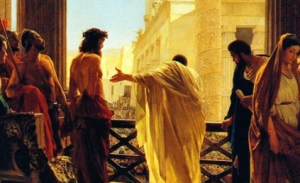 PMW 2021-047 by Kenneth L. Gentry, Jr.
PMW 2021-047 by Kenneth L. Gentry, Jr.
Matt. 23:39 is a favorite statement by Jesus that dispensationalism cling to as evidence of the future conversion of Israel. Read through their lens, it seems to state that Israel will one day be converted, and only then will the great tribulation begin (according to the order of verses following Matt 23:39). They hold that this would confirm dispensationalism and undermine preterism and postmillennialism.
Matthew 23:39 read:
“For I say to you, from now on you shall not see Me until you say, ‘Blessed is He who comes in the name of the Lord!’”
Unfortunately for dispensationalism, this statement does not suppose a future conversion of Israel that precedes the great tribulation. I do believe Israel will one day be converted to Christ. After all, I am a postmillennialist who believes that we are to “disciple all the nations” (Matt 28:19). And that we are to confidently trust that “if I be lifted up I will draw all men to myself” (John 12:32). And Israel is certainly one of the nations. In fact, Rom 11:25 is a powerful NT statement to this end.
So then, is the Lord’s statement in Matt 23:39 teaching that Israel will be converted before the great tribulation? I do not believe this is the case.
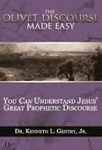
Olivet Discourse Made Easy (by Ken Gentry)
Verse-by-verse analysis of Christ’s teaching on Jerusalem’s destruction in Matt 24. Show the great tribulation is past, having occurred in AD 70.
See more study materials at: www.KennethGentry.com
In this regard note the following quick observations:
First, the connection made
The word gar connects this statement with the preceding context. The preceding context is one of unrelenting denunciation, ending with judgment. The “for” must introduce something other than a spiritual praise of Christ by the Jews, for such a sudden statement in this passage would be wholly unexpected.
The passage is dominated by the seven woes of Christ against the scribes and Pharisees, who were prominent leaders in Israel. And toward the end of the Lord’s denunciation, and just before Matt 23:39, he declares:
“Therefore, behold, I am sending you prophets and wise men and scribes; some of them you will kill and crucify, and some of them you will scourge in your synagogues, and persecute from city to city, so that upon you may fall the guilt of all the righteous blood shed on earth, from the blood of righteous Abel to the blood of Zechariah, the son of Berechiah, whom you murdered between the temple and the altar” (Matt 23:34–35).
And after this he laments:
“Jerusalem, Jerusalem, who kills the prophets and stones those who are sent to her! How often I wanted to gather your children together, the way a hen gathers her chicks under her wings, and you were unwilling. Behold, your house is being left to you desolate!” (Matt 23:37–38).
These strong statements do not sound like a lead-in to Israel’s salvation. And especially when we read the judgment upon the temple and Jerusalem in the Olivet Discourse that follows.
Second, the possibility presented
The phrase “from now on” (Gk. ap arti) is indefinite, holding out only an uncertain possibility. Thus, it does not declare as a matter of fact: “you will see me.” Jesus is denouncing the Jews, not offering them hope. He is about to be crucified by them amidst Israel’s strong rejection and their affirmation of Caesar: “As a result of this Pilate made efforts to release Him, but the Jews cried out saying, ‘If you release this Man, you are no friend of Caesar; everyone who makes himself out to be a king opposes Caesar’” (John 19:12).
In fact, the whole statement says includes an important second clause: “from now on you will certainly not see me until [heos an.]” R. T. France puts the matter well (The Gospel of Matthew, NICNT, p. 885): “the subjunctive makes this in effect what grammarians call an unreal condition: if you were to do this, you would see me, but whether you will do so remains unknown. . . . It is remarkable that so many interpreters can find a positive prediction in what is in fact an emphatically negative prediction (ou me with subjunctive) with only an indefinite possibilty (ho an) set against it.”
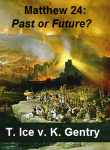
Matthew 24 Debate: Past or Future?
(DVD by Ken Gentry and Thomas Ice)
Two hour public debate between Ken Gentry and Thomas Ice on the Olivet Discourse.
See more study materials at: www.KennethGentry.com
Third, the praise declared
The praise uttered here (“blessed is he who comes”) is not necessarily a voluntary, loving, humble praise. It could well be a constrained praise. The Scripture often speaks of the sinner’s constrained praise of God. We see this, for instance, in:
“For this reason also, God highly exalted Him, and bestowed on Him the name which is above every name, so that at the name of Jesus every knee will bow, of those who are in heaven and on earth and under the earth, and that every tongue will confess that Jesus Christ is Lord, to the glory of God the Father” (Phil 2:10–11).
“For it is written, ‘As I live, says the Lord, every knee shall bow to me, and every tongue shall give praise to God’” (Rom 14:11).
Consequently, given the context, the praise to be uttered by the Jews appears to be constrained and with reluctance. He is speaking to those Jews in that day. They will soon see him in chains and then mounted on a cross to die, while they cry out “Crucify! Crucify” (John 19:6) and “His blood shall be on us and our children!” (Matt. 27:25). They will soon strike him and spit upon him. But he is not the feeble man they believe him to be. He will turn the tables on them in AD 70 when he comes against them in clouds of judgment.
June 15, 2021
THE DEAD JUDGED AT THE 7TH TRUMPET (2)
 PMW 2021-046 by Kenneth L. Gentry, Jr.
PMW 2021-046 by Kenneth L. Gentry, Jr.
This is the second in a two-part study of the debated phrase in Rev. 11:18b, which reads: “and the time came for the dead to be judged.” In my last article I argued that it refers to the vindication of the first-century saints who were being severely persecuted by Israel and Rome alike. In this article I will respond to objections to the interpretation presented by the leading evangelical commentator on Revelation today, G. K. Beale.
Regarding kirthēnai which I translate “vindicated,” Beale (617–18) presents an extended argument against the preterist view which, he believes, “stumbles” here. He argues that “without doubt . . . this passage is a description of the last judgment” (615). I will summarize his argument first, then reply to it point-by-point.
Beale argues: (1) BAGD does not offer this “vindication” option for krinō (618n). (2) Rev 6:17 presents “heightened descriptions of the consummated kingdom and judgment” (617). (3) The other eight examples of krinō in Rev “all refer to judgment of the ungodly” (618). (4) Had John intended to speak of vindication, he could have used ekdikeō “which explicitly has that meaning and is used in that way in 6:10 and 19:2″ (618). (5) Rev 20 appears to parallel this passage, but it speaks of the judgment against the wicked (618). (6) Ps 2 is the backdrop for 19:15-21 and probably so here (618).
I would offer this seriatim response:
Legitimate possibility
First, Beale admits that “vindicate” is “theoretically possible” (618n). What is theoretically possible cannot be dismissed out-of-hand and may well be the case. In fact, when explaining the “reward” (misthon, 6:18c) for God’s people, Beale notes that it “includes vindication” (615). Significantly, he also says that the action in this text seems to answer the cry of the saints in 6:9–11 (Beale 616; cp. Smalley 292). I would note here (as I will do in my forthcoming commentary at 6:9–11), though, that the martyrs are promised 2000 years ago that they should wait only a “little while longer [chronon mikron]” (6:11). And this near-term expectation is reiterated in the oath scene immediately preceding the temple-judgment episode: “there shall be delay no longer” (10:6). In 6:10 the martyrs plea for God to no longer “refrain from judging and avenging our blood.” Note that “our blood” is not only “judged,” but “avenged.”
 The Beast of Revelation (246pp); Before Jerusalem Fell: Dating the Book of Revelation (409pp); Navigating the Book of Revelation: Special Studies on Important Issues (211pp).
The Beast of Revelation (246pp); Before Jerusalem Fell: Dating the Book of Revelation (409pp); Navigating the Book of Revelation: Special Studies on Important Issues (211pp).
In the Logos edition, these volumes by Ken Gentry are enhanced by amazing functionality. Important terms link to dictionaries, encyclopedias, and a wealth of other resources in your digital library. Perform powerful searches to find exactly what you’re looking for. Take the discussion with you using tablet and mobile apps. With Logos Bible Software, the most efficient and comprehensive research tools are in one place, so you get the most out of your study.
For more study materials, go to: KennethGentry.com
Furthermore, BAGD (568) offers several options allowing the preterist interpretation of krinō. It mentions Dt 32:36 (LXX) “where the judgment of God is spoken of, resulting in the vindication of the innocent.” This fits perfectly with the preterist interpretation. It also can mean “to engage in a judicial process, judge, decide, hale before a court” as a technical term “in a forensic sense” (BAGD 568). If krinō can be a “judicial process,” then 11:18 could speak of the martyrs receiving their “day in court,” as it were. After all, it is “the time” when they are given “their reward [misthon]” (11:18c). Misthon speaks of reward or wages for work accomplished, it is “based on what a person has earned or deserves” (Aune 644; e.g., Jas 5:4). John uses the term in this sense in 22:12: “Behold, I am coming quickly, and My reward is with Me, to render to every man according to what he has done” (cp. 2:23).
In the final analysis, Beale seems to overlook the sixth meaning in BAGD (569): “to ensure justice for someone, see to it that justice is done.” Here BAGD references Isa 1:17 where Israel is directed to “seek justice” for the orphan and the widow, not to judge and punish them. David calls for God to “judge” (krniō) him, i.e., vindicate him (Ps 43:1; cp. Ps 10:18; 26:1; 54:1). Thus, with the collapse of the temple, the Jewish-Christian martyrs will see justice done, they will be vindicated.
Unfortunate concession
Second, Beale’s statement that 6:17 involves “heightened descriptions of the consummated kingdom and judgment” is not necessarily so. In the hyperbolic tendency of apocalyptic drama, the destruction of the temple (which brings to a final conclusion of the whole old covenant world) can warrant just such an “heightened,” earth-shaking description. Should we not expect such elevated expressions since the kingdom of Christ comes in the first century (Mk 1:15; 9:1; Mt 12:28)? In the apocalyptically-framed OT prophecies, various historical judgments against ancient peoples are described as a the collapsing stellar universe (Isa 13:10 [cp. v 1]; Eze 32:7 [cp. v 2]; Joel 2:10 [cp. v 1]; 3:15 [cp. v 4]).
Four Views on the Book of Revelation
(ed. by Marvin Pate)
Helpful presentation of four approaches to Revelation. Ken Gentry writes the chapter on the preterist approach to Revelation, which provides a 50 page survey of Revelation .
See more study materials at: www.KennethGentry.com
Rare usages
Third, regarding the eight other examples of krinō in Rev I would make two observations:
(1) Rare uses of terms (such as I am suggesting in this case) do occur. We surely cannot say a rare usage can never be warranted: that would render them non-existent, not “rare.” Perhaps this is the one use which breaks the pattern in Rev.
(2) Beale is mistaken when he claims all other uses of krinō in Rev “refer to judgment of the ungodly” (618). One of the passages he himself lists contradicts his statement when he explains its later: “And I saw the dead, the great and the small, standing before the throne, and books were opened; and another book was opened, which is the book of life; and the dead were judged from the things which were written in the books, according to their deeds” (20:12). Notice that two books are opened, one being the “book of life.” Note also that the dead were judged from the things written in the “books” plural. Only the righteous are listed in the book of life (3:5; 13:8; 17:8; 20:15) for it is “the Lamb’s book of life (20:15; 21:27).
Rev has a strong reward theme regarding the deeds of the righteous (2:26; 14:5, 13; 19:8; 22:11, 12) — before the very same throne of God (14:3-5; 19:4-8) where Israel is judged. Beale even recognizes that this krinō judgment in Rev 20 includes both “the unrighteous and the righteous” (Beale 1032), involving “an all-inconclusive [sic, it should read “all-inclusive”] reference to both believers and unbelievers” (Beale 1033). He (1034) admits that “it is possible that the believing dead are included among those ‘judged according to their works.’”
Word choice
Fourth, Beale notes that John chooses not to use the clearer word for “vindication”: ekdikeō. I have already shown that krinō can serve that function, so it becomes simply a matter of word choice. But perhaps John prefers the term that more strongly indicates judgment in that “the time” comes not only for the vindication of the saints by “reward,” but also “to destroy those who destroy the earth” (11:18d). Thus, krinō contains within it both results (Stuart 2:243).
Parallel passage
Fifth, does Rev 20 parallel our passage, so that it must refer to the judgment against the wicked? We should note, first, that earthly, temporal judgments are pointers to the final eternal judgment; they are sign-posts along the way. Both types of judgment are judicially related, though the historical forerunners are on a smaller scale. I believe the AD 70 judgment is a reflection of the distant, greater final judgment. As Beale (978) argues elsewhere on another passage, AD 70 is one of the recurring “inaugurated fulfillments continuing over extended periods of time and followed by consummative fulfillment” (Beale 978). This judgment in 11:18 appears in the context of the first-century destruction of the temple and Jerusalem (11:2 a, b), is immediately relevant to John’s audience (1:9, 11), and is near (as per 10:6d), occurring at the end of a forty-two month period (11:2, 3). However, the final judgment occurs in the distant future after the “thousand years” (20:2–6).
OT backdrop
Sixth, Ps 2 is the backdrop for 19:15–21 and probably so here (618). But this no more proves the final judgment than does the use of Ps 2 in Ac 4:25-26. There the apostles apply it to the first-century crucifixion of Christ by the gathering of Herod and Pontius Pilate against him (cf. Beale and Carson 2007: 553). Contrary to Beale’s expectations regarding 1:7 (196), John can use Zec 12:10 also of the crucifixion (Jn 19:37). After all, “there is unanimous consensus that John uses the OT with a high degree of liberty and creativity” (Beale 81) so that “we may viably speak of changes of application” (85).
Thus, I believe a strong case may be made and defended for the preterist view of this tricky phrase in Rev. 11:18.
Click on the following images for more information on these studies:

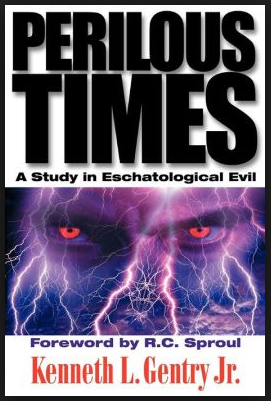
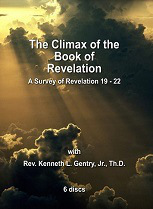
June 8, 2021
THE DEAD JUDGED AT THE 7TH TRUMPET (1)
 PMW 2021-045 by Kenneth L. Gentry, Jr.
PMW 2021-045 by Kenneth L. Gentry, Jr.
The seventh trumpet in Revelation marks a dramatic moment in the flow of visions. And it makes a fascinating point (as often in Revelation) by means of heavenly praise. This portion of Revelation reads (in part):
The phrase’s phrasing
“Then the seventh angel sounded; and there were loud voices in heaven, saying, The kingdom of the world has become the kingdom of our Lord and of His Christ; and He will reign forever and ever. And the twenty-four elders, who sit on their thrones before God, fell on their faces and worshiped God, saying, We give You thanks, O Lord God, the Almighty, who are and who were, because You have taken Your great power and have begun to reign. And the nations were enraged, and Your wrath came, and the time came for the dead to be judged, and the time to reward Your bond-servants the prophets and the saints and those who fear Your name, the small and the great, and to destroy those who destroy the earth.” (Rev. 11:15–18).
Of particular concern when approaching Revelation from the preterist perspective is the phrase: “Your wrath came, and the time came for the dead to be judged.” I believe this is associated with the destruction of the temple in AD 70.
The Beast of Revelation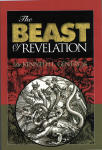
by Ken Gentry
A popularly written antidote to dispensational sensationalism and newspaper exegesis. Convincing biblical and historical evidence showing that the Beast was the Roman Emperor Nero Caesar, the first civil persecutor of the Church. The second half of the book shows Revelation’s date of writing, proving its composition as prior to the Fall of Jerusalem in A.D. 70. A thought-provoking treatment of a fascinating and confusing topic.
For more study materials, go to: KennethGentry.com
I will consider this intriguing statement in two articles. In this first one I will provide my interpretation. In the next article I will consider Greg K. Beale’s powerful challenge to this view.
The phrase’s function
The phrase “the time came for the dead to be judged” [krithēnai, aor. inf.] (11:18b) is effectively an imprecatory prayer calling down judgment on God’s enemies. With many commentators, Kistemaker (344) sees the dead as encompassing “all those who have died” / “all people.” Though this is perhaps the majority view, I believe a strong case may be made against it, and for a more narrow and more contextually relevant view.
The “dead” being “judged” (krinō) here probably refers to the first-century martyrs slain by the Jews. Those martyrs are being vindicated. In Rev “the dead” can mean either believers (14:13; and probably 1:5) or unbelievers (20:5, 12).
The relevant portion of the elders’ praise of God may be translated: “And the nations were wrathful, that is [kai], your wrath came; that is [kai], the time of the dead to be vindicated.” The two instances of kai are both epexegetical of the phrase: “the nations were wrathful.” That is, “the time for the dead (the martyred servants of God) to be vindicated has come, and this is announced with hymnic celebration” (Musvosvi 169). Moses Stuart (2:243) agrees: “the martyrs, are to be vindicated,” i.e., the martyrs of 6:9–11.
The term krinō can be used of “the judgment of God . . . resulting in the vindication of the innocent . . . and the punishment of the guilty” (BAGD 452). We can see clear examples of this in the LXX at 2Sa 18:19; Ps 10:18; 26:1; 43:1; Isa 1:17. Similarly, the OT outlook is such that “when the Israelite prays to Yahweh to ‘judge’ him, it is as if he says ‘uphold my rights for me! help me!’” (Nielsen 76).

Blessed Is He Who Reads: A Primer on the Book of Revelation
By Larry E. Ball
A basic survey of Revelation from the preterist perspective.
It sees John as focusing on the destruction of Jerusalem and the temple in AD 70.
For more Christian studies see: www.KennethGentry.com
Thus, the elders in heaven declare that the time has come to fulfill the prayers of the martyred saints mentioned in Rev: those who are pleading for God’s wrath against his and their enemies (6:10; 8:3–4; cp. Lk 18:7–8). As with Jesus (Mt 23:35–36) and Paul (1Th 2:14–17), Rev relates Israel’s destruction not only to Christ’s crucifixion, but to his saints’ persecution (16:6; 17:6; 18:20, 24), both of which are instigated by the Jews. After all, the resurrected Lord confronts Paul while he is persecuting the church (Ac 9:1–2), and warns him that the persecution of the saints is the persecution of him: “I am Jesus whom you are persecuting” (Ac 9:5). As Jesus teaches, whoever does anything to or for his people, does it to or for him (Mt 25:45). This is just as Jesus warns his disciples: “if they persecuted Me, they will also persecute you” (Jn 15:20b).
But this is a minority view. Able scholars such as G. K. Beale reject it on several grounds. I will present, consider, and respond to Beale’s objections in my next article (unless the Rapture comes between now and then).
Click on the following images for more information on these studies:


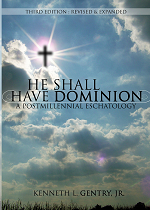
June 4, 2021
POSTMILLENNIALISM’S “SIN PROBLEM” (2)
 PMW 2021-044 by Kenneth L. Gentry, Jr.
PMW 2021-044 by Kenneth L. Gentry, Jr.
In my last blog article I began a brief consideration of the challenge: How can postmillennialism have a hope for the future in light of the total depravity of man? This is a reasonable challenge. Our eschatology must be compatible with out theology. One doctrine should not undermine another: “the Scripture cannot be broken” (John 10:35).
Hal Lindsey complains that postmillennialists “rejected much of the Scripture as being literal and believed in the inherent goodness of man” (Lindsey, Late Great Planet Earth, 176). I would note, however, that postmillennialists do not believe in the inherent goodness of man, but Lindsey most definitely believes in the inherent weakness of the gospel. He believes that man’s sin successfully resists the gospel even to the end of history. Jonah also had a concern regarding the power of the gospel: he feared its power to save wicked, powerful Nineveh (Jon 1:2–3, 10; 3:2; 4:1–4).
Gary North notes the irony of the complaint that I am considering here. Anti-postmillennialists “believe that a postmillennial revival is inherently impossible because of the power of rebellious autonomous men. They have great faith in man — autonomous, unsaved man. He can thwart the plan of God. Autonomous man says “no” to God, and God supposedly chooses never to overcome this ‘no.’ So, it is in fact the critic of postmillennialism who has faith in autonomous man. He believes that unsaved mankind has such enormous power to do evil that God cannot or will not overcome evil in history by the Spirit-empowered gospel.” (North and DeMar, Christian Reconstruction, 63)
Amillennialism v. Postmillennialism Debate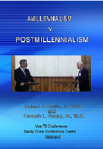 (DVD by Gentry and Gaffin)
(DVD by Gentry and Gaffin)
Formal, public debate between Dr. Richard Gaffin (Westminster Theological Seminary) and Kenneth Gentry at the Van Til Conference in Maryland. The debate focuses on whether the church is called to perpetually suffer in history.
See more study materials at: www.KennethGentry.com
Though it is true that the “heart is deceitful above all things, and desperately wicked” (Jer 17:9), yet the postmillennialist firmly believes that “God is greater than our heart” (1Jn 3:20). We are confident that “He who is in you is greater than he who is in the world” (1Jn 4:4). After Christ’s resurrection the church receives the Spirit’s outpouring (Jn 7:39; Ac 2:33). And God promises that historical power is “not by might nor by power, but by My Spirit” (Zec 4:6).
We must emphasize this point: We may not convincingly argue for any optimistic expectation for mankind’s future on a secular base. This glorious postmillennial prospect is not in any way, shape, or form rooted in any humanistic effort. We cannot have a high estimation of man’s future based on man in himself, for “the mind set on the flesh is hostile toward God; for it does not subject itself to the law of God, for it is not even able to do so; and those who are in the flesh cannot please God” (Ro 8:7–8). When left to himself man’s world is corrupted and destroyed — a classic illustration being in the days of Noah (Ge 6:5). But God refuses to leave man to himself.
But neither does the hope for the man’s progress under the gospel relate to the Christian’s self-generated strength, wisdom, or cleverness. Left to our own efforts, we Christians too quickly learn that “apart from Me you can do nothing” (Jn 15:5). Were our future outlook rooted in the unaided power even of redeemed man, all would be hopeless. But our hope is in the resurrected Christ. “The labor is ours; the subduing is His.” (Hobbs, An Exposition of the Gospel of Matthew, 422)
 Your Hope in God’s World (Kenneth Gentry)
Your Hope in God’s World (Kenneth Gentry)
5 DVDs; 5 lectures
This series of lectures presents the theological and exegetical argument for the postmillennial hope in our fallen world. The last lecture answers the major practical, theological, and exegetical objections to postmillennialism. An excellent series for both introducing and refreshing one’s understanding of postmillennialism.
See more study materials at: www.KennethGentry.com
Amillennialist Bernard Woudenberg’s complaint against postmillennialism is woefully ill-conceived: “It is like the children of Israel rushing in to take the land of Canaan, but without Moses at their head (Numbers 14:40–45). Christ alone holds the right to rule, and he does (Ephesians 1:19–22), and we are never more than simply servants of His” (Woudenberg, “Hope as an Incentive to Godliness,” Standard Bearer, 1990,161). As Woudenberg notes in his self-vitiating argument, Christ does rule! Therefore, postmillennialists humbly bow themselves before him and seek to employ his Law-word under his headship. Would Woudenberg dismiss authoritative church leadership? Is eldership a usurpation of the authority of Christ who is the Head of his church? How, then, can he dismiss the prospect of Christian leadership in the world, as if it implies a usurpation of Christ’s authority?
Sin is a huge factor in world affairs, to be sure. But God has established redemption to overcome that factor. Despite all the sin in the world, we must faithfully pray: “Your will be done, / On earth as it is in heaven” (Matt 6:10). And in praying, we must believe. “All things you ask in prayer, believing, you will receive” (Matt 21:22).
For Godawa’s Chronicles of the Apocalypse, click: HERE
June 1, 2021
POSTMILLENNIALISM’S “SIN PROBLEM” (1)
 PMW 2021-043 by Kenneth L. Gentry, Jr.
PMW 2021-043 by Kenneth L. Gentry, Jr.
One of the most frequent, forceful, and compelling objections against the postmillennial hope of world conversion is based on the problem of sin. Like me, many Christians are committed to Calvinistic doctrine regarding man’s total depravity. Total depravity teaches that man is a fallen sinner and depraved in every aspect of being. How can we have any hope for a better world governed by sinful men?
In dispensationalist J. Dwight Pentecost’s assessment of the deficiencies of postmillennialism, his fourth objection is along these lines. He speaks of “the new trend toward realism in theology and philosophy, seen in neo-orthodoxy, which admits man is a sinner, and can not bring about the new age anticipated by postmillennialism” (Pentecost, Things to Come, 387). Prophetic populist Hal Lindsey asserts that postmillennialism believes in “the inherent goodness of man” (Lindsey, The Late Great Planet Earth, 176).
Herman Hanko, a strong Calvinist, is convinced that “from the fall on, the world develops the sin of our first parents. This development continues throughout history. . . . More and more that kingdom of darkness comes to manifestation as time progresses” (Hanko, “An Exegetical Refutation of Postmillennialism,” Protestant Reformed Theological Journal [11:2] 25). Indeed, in his view postmillennialism “is a mirage, therefore, a false hope, because it fails to reckon properly with the fact of sin” and “cannot take sin as seriously as do the Scriptures” (Hanko, “The Illusory Hope of Postmillennialism,” Reformed Witness, 159).
How can the postmillennialist get around such objections? Especially Calvinist postmillennialists, like me? I will answer this question in two articles.
In the first place I would point that despite the presence of sin, sinners do nevertheless convert to Christ. We must remember that each and every convert to Christ was at one time a totally depraved sinner. Is this not the case? Has it not always been the case?
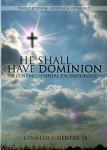
He Shall Have Dominion
(paperback by Kenneth Gentry)
A classic, thorough explanation and defense of postmillennialism (600+ pages). Complete with several chapters answering specific objections.
See more study materials at: www.KennethGentry.com
And yet we have hundreds of millions of Christians in the world today. Salvation comes by the gospel which is “the power of God unto salvation” (Rom 1:16). How can we deny the gospel’s power that has already saved millions of depraved sinners? What God can do for one sinner he can do for another. This is evident in the apostolic era (Ac 2:41; 4:4), as well as in biblical prophecy (Isa 2:3–4; Psa 86:9; Rev 5:9; 7:9).
A fatal objection to postmillennialism cannot arise from the power of sin. After all, the power of God to save greatly overshadows the power of sin to destroy. Indeed, “with God all things are possible” (Lk 18:27). In the ultimate analysis, the issue is not the power of sin, but the power of God. As I point out in the PostmillennialismToday blog, and as all postmillennialists argue, It is God’s will to bring redemption gradually to the whole world as a system through the proclamation of Christ’s gospel while building his church.
But in one sense though it is true that the postmillennialist overlooks the depravity of man. He overlooks it — that is, looks over and beyond it — to see the resurrection of Jesus Christ. David Chilton challenges us: “Like Peter walking on the Sea of Galilee, [despairing evangelicals] looked at ‘nature’ rather than at the Lord Jesus Christ; like the Israelites on the border of Canaan, they looked at the ‘giants in the land’ instead of trusting the infallible promises of God; they were filled with fear, and took flight” (Chilton, Paradise Restored, 232).
Three Views on the Millennium and Beyond
(ed. by Darrell Bock)
Presents three views on the millennium: progressive dispensationalist, amillennialist, and reconstructionist postmillennialist viewpoints. Includes separate responses to each view. Ken Gentry provides the postmillennial contribution.
See more study materials at: www.KennethGentry.com
We see the glorious power of Christ’s resurrection overwhelming the destructive power of Adam’s fall. We need to consider the strength of grace in comparison to the power of sin. The Christian should ask himself: “Have I ever seen a lost man become saved?” The answer is: Yes. This being the case, it is evident that grace is stronger than sin. The Christian should then ask a follow up question: “Does the Bible teach that a saved man can lose his salvation?” Here the answer is: No. In both cases, we see the superior power of God’s grace over man’s sin. As postmillennialist scholar David Brown once put it: “Souls that have felt the Saviour’s grace know right well its matchless power. After their own conversion, they can never doubt its converting efficacy on any scale that may be required” (Brown, Christ’s Second Coming, 302–303).
To be continued.

May 25, 2021
REVELATION’S JUDAIC IMAGES
PMW 2021-042 by Kenneth L. Gentry, Jr.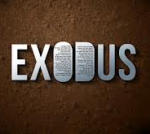
Revelation has an extremely Judaic character. This peculiar characteristic underscores John’s theme of God’s judgment on Israel in AD 70.
John’s style is such that “the reader unfamiliar with the OT is hard pressed to make any sense of Revelation” (Beale and Carson). This is because “when reading the book of Revelation one is plunged fully into the atmosphere of the Old Testament. No book of the New Testament is as saturated with the Old as is the Apocalypse” (McKelvey).
Beale and Carson, in fact, that “the imagery is drawn almost exclusively from the OT” so that Rev presents an “overall Semitic style” (Beale). Below I will note in detail the presentation by Fekkes that lists a larger number OT persons, institutions, and geographical features found in Rev, including Balaam, David, Moses, Gog and Magog, the altar of sacrifice, the ark of the covenant, and the tabernacle. As Prigent observes “the ideological context of the book of Revelation is essentially the OT.” Once again, these are most appropriate for a work dealing with the historical failure of Israel and God’s coming judgment on her.
Before Jerusalem Fell
(by Ken Gentry)
Doctoral dissertation defending a pre-AD 70 date for Revelation’s writing. Thoroughly covers internal evidence from Revelation, external evidence from history, and objections to the early date by scholars.
See more study materials at: www.KennethGentry.com
A widely-noted, recurring theme in Rev is the OT exodus motif which was “the foundational event in Israel’s history” and even “became permanently definitive of the nature of Yahweh, Israel’s God” (Wright). It was central to Israel’s history (Ex 20:2–3; Dt 5:6–7), celebrated at its occurrence (Ex 15:1–18), and mentioned repeatedly elsewhere in song (Pss 78; 105; 106) and prophecy (Eze 20:3–26; Isa 40:3–5; Am 4:10). Some note that since exodus was written, “confessions of faith from this point on derive from the exodus events” (Baker’s Evangelical Dictionary of Biblical Theology).
Thus “the motif of the exodus is one of the unifying images of the Bible. The literal exodus of Israel from Egypt . . . becomes the single richest source of allusion for OT writers” (Dictionary of Biblical Imagery). Imagery reflecting the exodus and the conquering of the Promised Land even fires the imagination of first-century Jewish anti-establishment enthusiasts. For instance, Theudas threatens to encircle Jerusalem and to cause the walls to collapse at his command (J.W. 2:13:5 §261; Ant. 20:8:6 §169; Ac 21:38), just as Joshua does at Jericho (Jos 6).
Stephen even employs exodus imagery in his polemic against Israel’s rulers (Ac 7:39–43). In fact, in Rev “a good case can be made for the dominance of the Sinai story (including the plague sequence)” (Moyise). Mathewson lists the following verses reflecting exodus imagery just from Second Isaiah: Isa 40:3–5; 41:17–20; 42:14–16; 43:13, 14–21; 48:20–21; 49:8–12; 51:9–10; 52:11–12; 55:12–13. Bauckham explains that “since the exodus was the key salvation event of the history of Israel, in which God liberated his people from oppression in Egypt, destroyed their oppressors, made them his own people and led them to theocratic independence in a land of their own, it was naturally the model for prophetic and apocalyptic hopes of another great salvation even in the future.”
In Rev we see exodus imagery in many places, such as: Jesus as the Passover Lamb (5:6–10; 7:14; 12:11; 13:8; cp. Ex 12:12, 23), ransomed / purchased people (5:9; 14:3–4; cp. Dt 7:8; 13:5), sealing of the faithful (Rev 7:4–7; cp. Ex 12:7, 22–23), plagues (8:7ff; 15:1ff; cp. Ex 7–11), deliverance on eagle’s wings to the desert (12:14; cp. Ex 19:4; Dt 32:11), the “song of Moses” (15:3–4; cp. Ex 15), lightning, earthquake, and trumpet sound (8:2, 6ff; 16:18; cp. Ex 19:16–18), kingdom of priests (1:6; 5:10; cp. Ex 19:5–6), one of the two witnesses modeled on Moses (11:6), the city called “Egypt” (11:8), the ark of the covenant (11:18; cp. Ex 25:10ff), the drying up of the sea (Rev 21:1c; cp. Ex 14:16, 21–22), and more.
Homosexual Question
(5 mp3s sermons by Ken Gentry)
The homosexual movement is one of the leading challenges to the moral stability of
American culture and to our Christian influence in culture.
In this sermon series Dr. Gentry tackles the homosexual question head on
See more study materials at: www.KennethGentry.com
Beasley-Murray notes regarding the “exodus typology” in Rev that “the parallel to the exodus narrative in the Old Testament is not accidental but conscious and deliberate.” Beagley shows how this fits our pre-70 context and Jewish judgment concerns, noting that he: “investigated the use of the Exodus motif in the Apocalypse, and the conclusion was reached that this motif constitutes the overall theological framework in which the Seer presents his message. . . . The Christian community is depicted as the counterpart of the Israelites who were preserved from judgment, while the Egyptians themselves suffered fearful torments. Jesus Christ is presented as the Passover Lamb. But who or what in Revelation is the counterpart of Egypt, on whom the judgments fell? . . . The author himself provides his readers with a clue: there is one explicit mention of the name ‘Egypt,’ and it is applied to ‘the great city . . . where their Lord was crucified’ (11:8). . . . We thus have prima facie evidence that the plagues of Revelation are to fall upon Jerusalem.”
May 21, 2021
HISTORICISM, REVELATION, AND THE REFORMATION
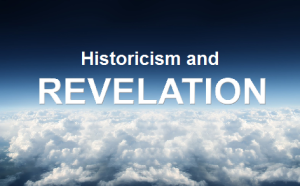 PMW 2021-041 by Kenneth L. Gentry, Jr.
PMW 2021-041 by Kenneth L. Gentry, Jr.
My computer is getting lighter as I remove more of the questions that have been sent to me by readers. Today’s question regarding the Book of Revelation, one of my favorite pastimes!
Reader’s question:
You are committed to the Reformed faith, yet you don’t take the historicist approach to eschatology which was widely held among the Reformers. Why do you not follow the Reformers in this part of their theology.
My response:
Thank you for your inquiry. You are correct that I am committed to Reformed theology. However, I differ from the Reformers in that I take a preterist approach to Revelation rather than an historicist approach. I do so for the following reasons:
First, we should remember that Revelation was not well received among some of the Reformers. Martin Luther, the famed reformer and untiring interpreter of Scripture, originally rejected Revelation as non-canonical, complaining, “My Spirit cannot adapt itself to the book.” In his German translation of the Bible, he complained in the preface to Revelation that the book was “neither apostolic nor prophetic.”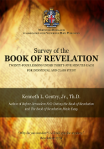
Survey of the Book of Revelation
(DVDs by Ken Gentry)
Twenty-four careful, down-to-earth lectures provide a basic introduction to and survey of the entire Book of Revelation. Professionally produced lectures of 30-35 minutes length.
See more study materials at: www.KennethGentry.com
Fellow reformer Ulrich Zwingli (1484-1531) refused to take a doctrinal proof-text from Revelation. Calvin himself wrote no commentary on it, despite his writing a very thorough series of commentary on almost all of the Bible.
Second, the Reformers were locked in a literal life-and-death struggle with Romanism. Consequently, they tended to view many judgment passages through the lens of their opposition to Rome. They let application override interpretation in some situations.
Such an exposition is known as an “actualizing interpretation.” “Actualizing interpretations take two forms. In one form the imagery of the Apocalypse is juxtaposed with the interpreter’s own circumstances, whether personal or social, so as to allow the images to inform understanding of contemporary persons and events and to serve as a guide for action” (J. Kovacs and C. R. Rowland, Revelation: Apocalypse of Jesus Christ [Oxford: Blackwell, 2004], 9).
For instance, we see this in the original Westminster Confession of Faith (25:6) where the Pope is called the Antichrist and the “man of lawlessness.” This not only gives too much credit to Romanism, but clearly misinterprets Scripture. If the Pope were Antichrist, then the papacy existed in the first century, for John confronts the antichrist in the first century (1Jn 2:18-22). But the Pope cannot be the Antichrist, for John defines the Antichrist as “one who denies the Father and the Son” (1Jn 2:22), as those who “do not acknowledge Jesus Christ as coming in the flesh” (2Jn 7). This is clearly not referring to Roman Catholic teaching.
Third, historicist expositions of Revelation from that era, the 1500-1600s are impossible today. If you can find an historicist exposition of Revelation from you will quickly observe that they believed Revelation outlined church history up to their own time, when they believed its final prophecies were coming to fulfillment. Just reading an earlier historicist exposition today refutes it.
Kovacs and Rowland note this problem: “Altogether more contentious and daring is the way certain interpreters saw these figures appearing in their own day. For some this reflects a conviction that the last days have come” (Kovacs, 128; referenced above). M. E. Boring seems to be correct when he notes that “although widely held by Protestant interpreters after the Reformation and into the twentieth century, no critical New Testament scholar today advocates this view” (M. Eugene Boring, Revelation: Interpretation: A Bible Commentary for Teaching and Preaching [Louisville: John Knox, 1989], 49).
Fourth, by the very nature of the case historicism suffers from a need of constant revision. The historicist school, also called the “continuous historical,” sees the prophetic drama in Revelation as providing a panorama of Church history from the apostolic era to the return of Christ. Historical continuity is the main focus of this approach which forecasts future history. Historicists deem Revelation an “almanac of church history.” Historicists apply the numerous judgment scenes to various wars, revolutions, and socio-political and religious movements (e.g., the rising of Roman Catholicism, the outbreak of the Protestant Reformation, the French Revolution, World Wars I and II), as well as important historical /persons (e.g., various Popes, Charlemagne, Napoleon, Mussolini).
According to Alan Johnson, Joachim of Floris (d. 1202) popularized this view, though traces of it are found earlier in the Ante-Nicene fathers (Johnson, “Revelation” in EBC, 12:409). As noted above, Wycliffe, Luther, Calvin, and the Reformers greatly employed it against the Roman Catholic Church.
Keys to the Book of Revelation
(DVDs by Ken Gentry)
Provides the necessary keys for opening Revelation to a deeper and clearer understanding.
See more study materials at: www.KennethGentry.com
The weaknesses, though, are manifold. The position almost always assumes that present interpreters live at the conclusion to history so that all in Revelation leads up to their time just before the end. For instance Mede noted in his commentary: “While I write news is brought of a Prince from the North (meaning Gustavus Adolphus) gaining victories over the Emperor in defence of the German afflicted Protestants.”
Commenting on recurring problems in eschatological debate in general, Brethren historian F. Roy Coad well states: “Almost invariably interpretation has been vitiated by the reluctance or incapacity of commentators to visualise their own age as other than the end time” (F. Roy Coad, Prophetic Developments: A Christian Brethren Research Fellowship Occasional Paper [Pinner, England: 1966], 10).
As a consequence, beliefs are in a constant state of revision, especially for Revelation commentators in this school. Consequently, as history has grown longer, older varieties of this interpretive school have experienced a great number of failed expectations. This view long remained “strangely attractive in spite of the recurrent anguish and disappointment it causes” (John Court, Myth and History in the Book of Revelation [Atlanta: John Knox, 1979], 7).
Thus, this approach is continually in revision as it proposes more and more constructions based on the supposed prophetic allusions to historic events. For instance, this view was prominent in the Middle Ages when millennialism began to flourish once again. The system was used to show that “the millennium was about to dawn” (Carson, Moo, Morris, Introduction to the New Testament, [Zondervan] 482).
Furthermore, its relevance is confined to the Western world, with the progress of history traced only in a western direction (apparently where book sales are most profitable!).
In addition, it tends to lose its relevance for its original persecuted audience.
Its major problem, though, is that harmony among its proponents is almost wholly lacking due to its subjectivity.
OLIVET IN CONTEXT: A Commentary on Matthew 21–25
I am currently researching a commentary on Matthew 21–25, the literary context of the Olivet Discourse from Matthew’s perspective. My research will demonstrate that Matthew’s presentation demands that the Olivet Discourse refer to AD 70 (Matt. 24:3–35) as an event that anticipates the Final Judgment at the Second Advent (Matt. 24:36–25:46). This will explode the myth that Jesus was a Jewish sage focusing only on Israel. The commentary will be about 250 pages in length.
If you would like to support me in my research, I invite you to consider giving a tax-deductible contribution to my research and writing ministry: GoodBirth Ministries. Your help is much appreciated!
May 19, 2021
DISPENSATIONALISM, JERUSALEM, AND SACRIFICES
 PMW 2021-040 by Kenneth L. Gentry, Jr.
PMW 2021-040 by Kenneth L. Gentry, Jr.
I try to keep up with correspondence as best I can. So in this posting, I am answering a question sent to me from a reader.
Reader question:
I have two questions on how you might respond to some Dispensational explanations of Ezekiel 40-48. (1) Some dispensationalists argue that the dimensions of Ezekiel’s temple are not a problem because the topography of the land will be radically changed in the millennium. They cite Zechariah 14 in defense of this topographical reconfiguration. They also cite the following passages to argue that Jerusalem will be much larger than what it is today: Jer. 31:38-40; Ezk. 48:30-35; Zech. 14;10-11. (2) The other thing relates to Ezekiel’s sacrificial system. They state that since the apostles did not have a problem with sacrifice in the New Testament, then why should we see it as problematic in the millennium? They cite Acts 21:17-26 in support of the idea that the apostles did not have a problem with sacrifice as a memorial and that Ezekiel’s sacrifices will have some efficacy for the unregenerate who are present in the millennium.
I have noticed that recently many Dispensationalists have felt the pressure of Covenant Theologians and have started an attempt to go on the offensive with their system via the internet and find ways to get around Covenant objections.
My response:
Thanks for your inquiry. Just briefly I would respond thus:
First, the prophetic texts that speak of Jerusalem being raised up are taken by dispensationalists in a woodenly literal fashion, as you know. But in fact, their interpretation is absurd. For instance, in Isa 2:2 we read:
“Now it will come about that in the last days, the mountain of the house of the Lord will be established as the chief of the mountains, and will be raised above the hills; and all the nations will stream to it. And many peoples will come and say, “Come, let us go up to the mountain of the Lord, to the house of the God of Jacob; that He may teach us concerning His ways, and that we may walk in His paths. For the law will go forth from Zion, and the word of the Lord from Jerusalem. Isaiah 2:3
Blessed Is He Who Reads: A Primer on the Book of Revelation
By Larry E. Ball
A basic survey of Revelation from the preterist perspective. It sees John as focusing on the destruction of Jerusalem and the temple in AD 70.
See more study materials at: www.KennethGentry.com
If this were taken literally (as dispensationalists do) note the absurdities involved:
For Jerusalem to be raised up as the highest mountain would involve such tectonic upheaval that it would absolutely destroy the city. Earthquakes are destructive natural phenomena. But this would involve even more catastrophe than quaking. It would engage mountain-building, which is absolutely destructive to a built city.
If it were indeed raised above the highest mountains, it would be uninhabitable. It would be higher than Mt. Everest. This would give it a horribly cold and snowy climate.
Not only would it be uninhabitable, but you wouldn’t see great masses of people heading up the mountain to learn the law of the Lord.
Obviously, this prophecy is speaking symbolically of the exaltation and dominance of God’s kingdom, not its physical elevation.
Second, the matter of temple worship. The problem with the dispensational argument based on Acts is: The old covenant and new covenant overlapped for about forty years. God did not shut down the old covenant immediately. He gave the Jews a generation to understand the changing of the redemptive economy. We should note:
In the Epistle to the Hebrews (written around AD 68-69), the writer speaks of the old covenant as nearing its final conclusion. Notice the verb tenses in this particularly important statement: “When He said, ‘A new covenant,’ He has made the first obsolete. But whatever is becoming obsolete and growing old is ready to disappear” (Heb 8:13). Consequently, in Acts the temple service was still in effect, but winding down. The temple began to be used as a base-of-operations for the Jewish converts to Christ to reach out to the Jews. But when AD 70 comes, the temple is forever removed.
The very idea of the sacrificial system was to point to its conclusion, when it was finally fulfilled and no longer necessary: “For the Law, since it has only a shadow of the good things to come and not the very form of things, can never by the same sacrifices year by year, which they offer continually, make perfect those who draw near” (Heb. 10:1).
Book of Revelation Made Easy
(by Ken Gentry)
Helpful introduction to Revelation presenting keys for interpreting. Also provides studies of basic issues in Revelation’s story-line.|
See more study materials at: www.KennethGentry.com
In fact, the text goes on to say: “But in those sacrifices there is a reminder of sins year by year. For it is impossible for the blood of bulls and goats to take away sins. Therefore, when He comes into the world, He says, Sacrifice and offering Thou hast not desired, but A BODY Thou hast prepared for Me; in whole burnt offerings and sacrifices for sin Thou hast taken no pleasure. Then I said, ‘Behold, I have come (In THE ROLL OF THE BOOK IT IS WRITTEN OF Me) to do Thy will, O God.’ After saying above, ‘Sacrifices and offerings and WHOLE BURNT OFFERINGS AND sacrifices for sin Thou hast not desired, nor hast Thou taken pleasure in them” (which are offered according to the Law), then He said, “Behold, I have come to do Thy will.” He takes away the first in order to establish the second. By this will we have been sanctified through the offering of the body of Jesus Christ once for all. And every priest stands daily ministering and offering time after time the same sacrifices, which can never take away sins; but He, having offered one sacrifice for sins for all time, sat down at the right hand of God, waiting from that time onward until His enemies be made a footstool for His feet. For by one offering He has perfected for all time those who are sanctified. And the Holy Spirit also bears witness to us” (Heb 10:3-15).
This is why Jesus taught the woman at the well: “Woman, believe Me, an hour is coming when neither in this mountain, nor in Jerusalem, shall you worship the Father” (John 4:21). The temple was on its way out. Mount Zion was about to lose its centrality and purpose.
To return to bloody sacrifices even as a “memorial,” would be to turn back to the blood of bulls and goats rather than turning to the blood of the Lamb of God. All bloody rites (including circumcision) have been done away with in Christ.
I hope this is helpful for your discussions with dispensational friends.
Kenneth L. Gentry Jr.'s Blog
- Kenneth L. Gentry Jr.'s profile
- 85 followers





